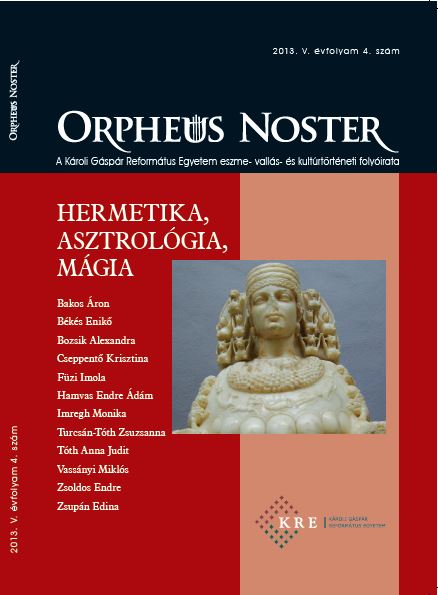Az Epheszoszi Artemisz-szobrok helyi jellegzetességei
Local characteristic of the Artemis statues in Ephesus
Author(s): Zsuzsanna Turcsán-TóthSubject(s): Theology and Religion, History of Religion
Published by: Károli Gáspár Református Egyetem
Keywords: Artemis Ephesia; ancient Asia Minor; Roman imperial period;
Summary/Abstract: Artemis Ephesia is one of the most significant goddesses on the western coast of ancient Asia Minor. Her cult flourished for nearly a thousand years with only brief interruptions, however, most of the numerous representations of her central image date from the time of the Roman imperial period. It is problematic to make a typology of the sculptures of Artemis Ephesia, as most of the statues were restored in varying degrees over the past centuries. Therefore we have to analyse those parts of the sculptures which were the least affected by the modifications, namely the chest. The most significant adornments of this area are the zodiac signs and the (mostly winged) female figures. According to this, four different types can be distinguished: four female figures with some zodiac signs, one zodiac sign between two female figures (mostly Cancer), female figures without zodiac signs, sculptures without either female figures or zodiac signs. If we connect this information to topographical data, we find that the statues decorated with one zodiac sign between two female figures appear only in Italy and its surroundings (Massalia). The other three types can be found both in Italy and the southern and eastern region of the Mediterranean Sea.
Journal: Orpheus Noster. A KRE Eszme-, Kultúr-, és Vallástörténeti Folyóirata
- Issue Year: V/2013
- Issue No: 4
- Page Range: 31-63
- Page Count: 33
- Language: Hungarian

